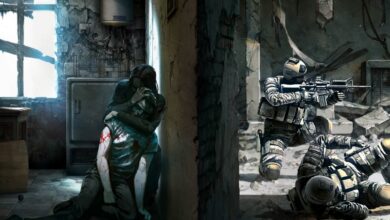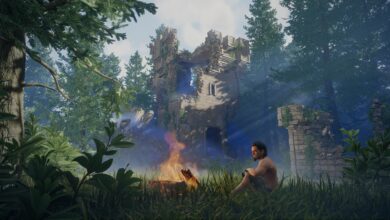Hubble Telescope photographs bright galaxies on collision course

In a new image recently released by the United States National Aeronautics and Space Administration (NASA), astronomers present the spiral galaxies UGC 05028 and UGC 05029 colliding in a merger process. Additionally, you can see a bright star-forming region surrounding the two galaxies, which are collectively called Arp 300.
The North American space agency explains that UGC 05028 is a galaxy slightly smaller than its cosmic partner, known as UGC 05029; it is precisely the larger galaxy that pulled the smaller cosmic structure through its powerful gravitational field. Both are not easy to view using ground-based telescopes, but the image photographed by Hubble presents the distinct details of each.
 The galaxies UGC 05028 and UGC 05029 are shown in the central part of the image, as well as stars represented by blue colors. There are also five other distant background galaxies at the bottom of the image. Source: NASA / ESA /J. Dalcanton / R. Windhorst / Processing: Gladys Kober
The galaxies UGC 05028 and UGC 05029 are shown in the central part of the image, as well as stars represented by blue colors. There are also five other distant background galaxies at the bottom of the image. Source: NASA / ESA /J. Dalcanton / R. Windhorst / Processing: Gladys Kober
Scientists realized that UGC 05028 has an asymmetric and irregular structure, however, this is likely to be due to the 'gravitational dance' with the larger galaxy. The two massive structures can be seen head-on in the image released by the Hubble telescope, showing their protuberances and spiral arms in constant brightness.
“UGC 05029 has a pronounced spiral structure and multiple hot blue giant stars visible on the side facing UGC 05028. This enhanced star formation is likely due to the interaction between the two galaxies. Another profile spiral galaxy is visible in this image below UGC 05029, but it is too faint to be resolved in star-forming regions, while the five objects arrayed above it are likely a group of distant background galaxies,” NASA describes.
Hubble and colliding galaxies
In the image, it is possible to observe that UGC 05028 emits a characteristic bright knot near its nucleus, which should not last long depending on the strength of the UGC 05029 galaxy. The researchers explain that when the merger process is complete, it is possible that the smaller galaxy will be completely absorbed by UGC 05029.
According to NASA, the Hubble observation of the pair of galaxies was carried out for scientists to study the general physical characteristics of the galaxies and their star formation processes.. It was this interaction between the two that caused the rapid birth of several stars in the region, considered an important dynamic of star formation.
“The bright knot visible southeast of the center of UGC 05028 may be the remnant of another small galaxy that is in the process of merging with that galaxy. If this is the case, this remnant will eventually merge with the bar of stars visible in Hubble images of UGC 05028, forming a central bulge similar to that of Arp 300's largest companion galaxy, UGC 05029,” NASA adds.
Did you like the content? Always stay up to date with the latest discoveries from the Hubble Space Telescope here at TecMundo and take the opportunity to learn more about how the first galaxies in the universe were born.





